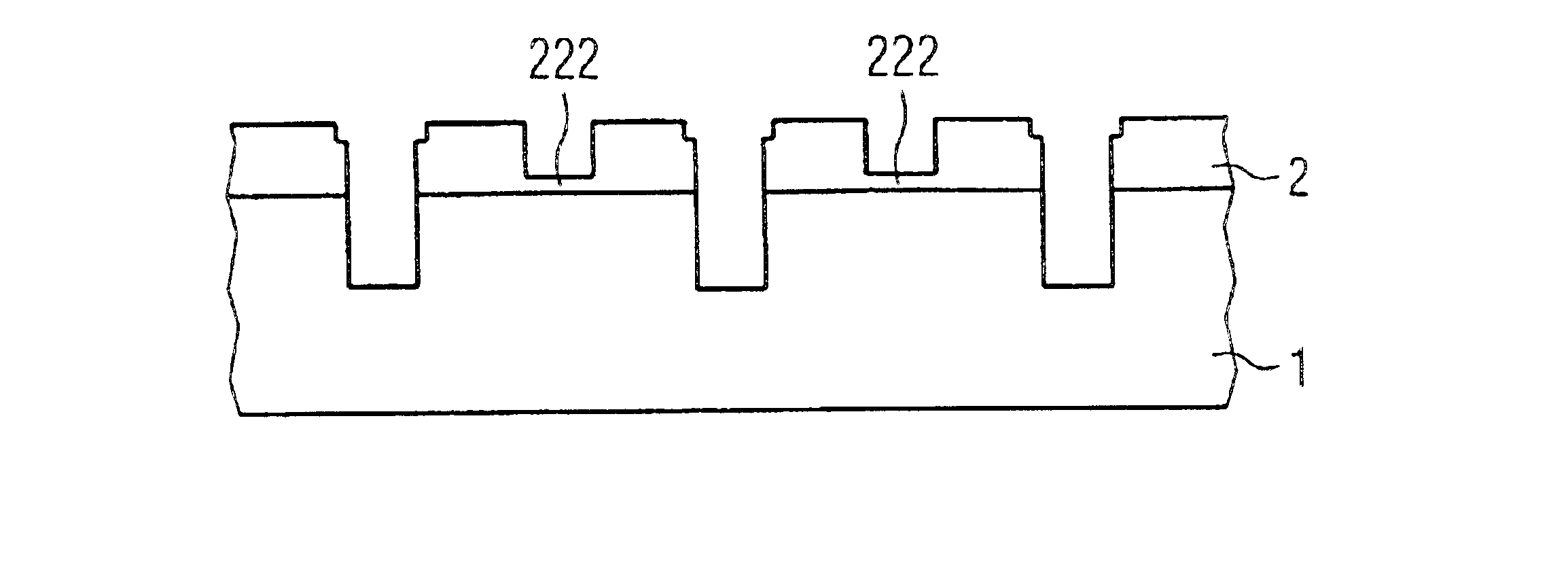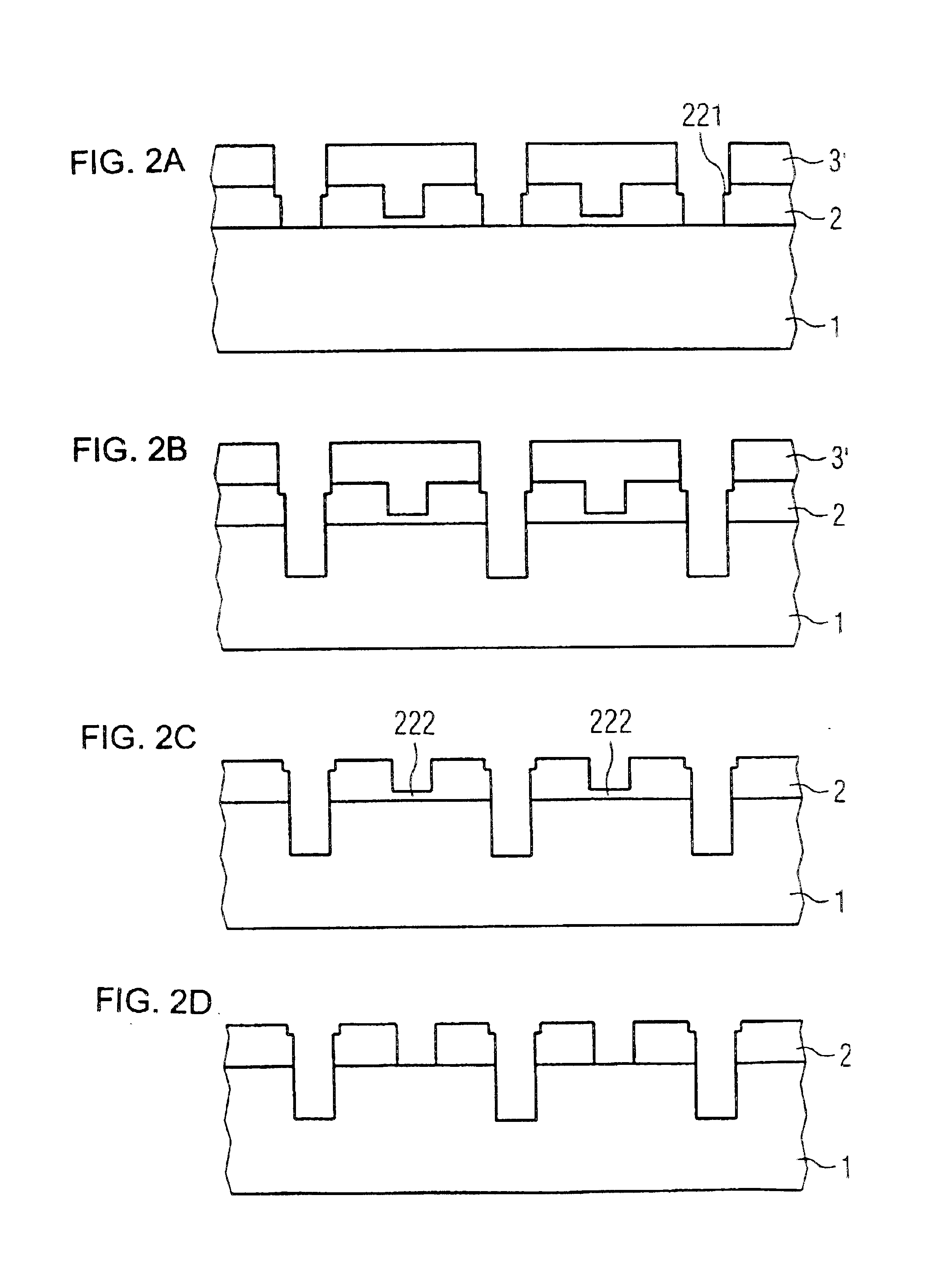Method for producing a phase shift mask
- Summary
- Abstract
- Description
- Claims
- Application Information
AI Technical Summary
Benefits of technology
Problems solved by technology
Method used
Image
Examples
Embodiment Construction
Referring now to the figures of the drawing in detail and first, particularly, to FIGS. 1A-1D thereof, there are shown process steps of an inventive production process for alternating phase shift masks through to exposure and development of a second level. A quartz blank is provided as a transparent substrate material 1. The substrate material 1 is coated with a chromium layer 2 of an initial chromium thickness 21 and a charge-sensitive resist layer 3 above it. The transparent substrate material 1 is exposed by an electron beam 4 that has a row and column structure. After a developing step, a first chromium etching step is carried out, during which, after a predetermined, defined duration, the etching operation is terminated. The duration was determined experimentally for the plasma etching unit used in the present example and blanks with an initial chromium thickness 21 of 100 nm, in such a manner that, after the first chromium etching step, there is a residual chromium thickness 2...
PUM
 Login to View More
Login to View More Abstract
Description
Claims
Application Information
 Login to View More
Login to View More - R&D Engineer
- R&D Manager
- IP Professional
- Industry Leading Data Capabilities
- Powerful AI technology
- Patent DNA Extraction
Browse by: Latest US Patents, China's latest patents, Technical Efficacy Thesaurus, Application Domain, Technology Topic, Popular Technical Reports.
© 2024 PatSnap. All rights reserved.Legal|Privacy policy|Modern Slavery Act Transparency Statement|Sitemap|About US| Contact US: help@patsnap.com










